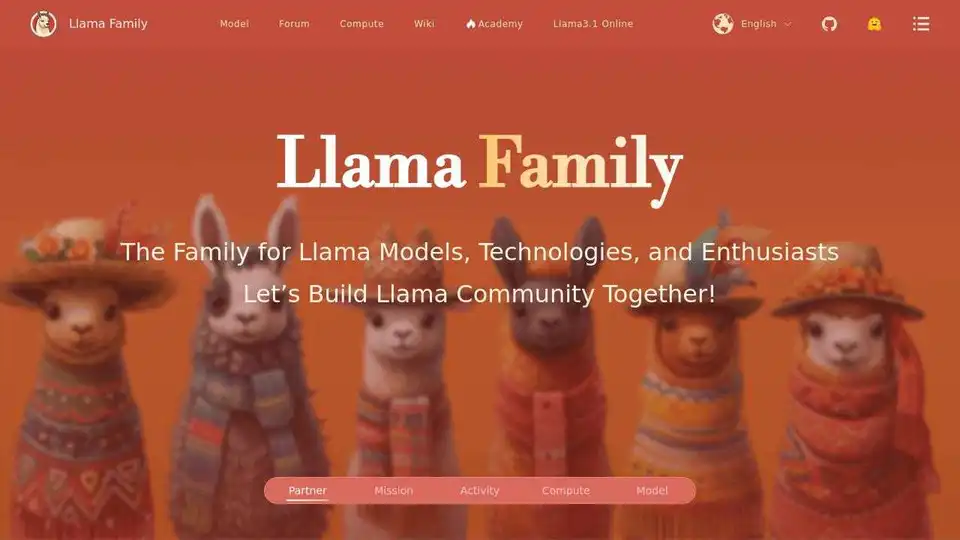
Llama Family
Overview of Llama Family
Llama Family: The Open-Source AI Model Ecosystem
What is Llama Family? The Llama Family is an open-source community dedicated to promoting the development of Artificial General Intelligence (AGI) through collaborative efforts centered around Llama models and related technologies. It aims to create a platform where developers and enthusiasts can contribute to an open-source ecosystem spanning various aspects of AI, from large-scale models to smaller ones, from text to multimodal capabilities, and from software to hardware algorithm optimizations.
Key Components of Llama Family
Models: The community focuses on various Llama models open-sourced by Meta, including Llama, Llama 2, Llama 3, Code Llama, and Atom. These models cover a range of parameter sizes and training datasets, catering to different use cases and research directions.
Compute: The community encourages collaboration and resource sharing for model training and experimentation. This includes utilizing GPU resources such as GeForce RTX series, NVIDIA H100, and A100 Tensor Core GPUs.
Community: Central to the Llama Family is its vibrant community of developers, researchers, and enthusiasts. The community fosters collaboration, knowledge sharing, and the co-creation of resources and tools.
Llama Models
Meta Llama
The Llama model open-sourced by Meta is widely used in both industry and academia. Versions include 1B, 3B, 8B, 70B, and 405B, with training data exceeding 15.0T tokens. Vision models include 11B and 90B, trained on over 6 billion image-text pairs.
| Model | Training Data | Params | Tokens | Release Date |
|---|---|---|---|---|
| LLaMA | English CommonCrawl, C4, Github, Wikipedia, Gutenberg and Books3, ArXiv, Stack Exchange | 7B (6.7B) | 1.0T | 2023/02/24 |
| 13B (13.0B) | 1.0T | |||
| 33B (32.5B) | 1.4T | |||
| 65B (65.2B) | 1.4T | |||
| Llama 2 | A new mix of publicly available online data | 7B | 2.0T | 2023/07/18 |
| 13B | 2.0T | |||
| 34B | 2.0T | |||
| 70B | 2.0T | |||
| Llama 3 | A new mix of publicly available online data | 8B | 15.0T | 2024/04/18 |
| 70B | 15.0T | |||
| Llama 3.1 | Collected from publicly available sources, over 5% of the Llama 3 pretraining dataset consists of high-quality non-English data that covers over 30 languages | 8B | 15.0T | 2024/07/23 |
| 70B | 15.0T | |||
| 405B | 15.0T | |||
| Llama 3.2 | Llama 3.2-Text: A new mix of publicly available online data | 1B (1.23B) | 9.0T | 2024/09/25 |
| 3B (3.21B) | 9.0T | |||
| Llama 3.2-Vision | Pretrained on image and text pairs. The instruction tuning data includes publicly available vision instruction datasets, as well as over 3M synthetically generated examples | 11B (10.6B) | 6B (image, text) pairs | |
| 90B (88.8B) | 6B (image, text) pairs |
Code Llama
Code Llama is trained on top of Llama 2 using code data and is categorized into Base Model, Python Model, and Instruct Model, with parameter sizes of 7B, 13B, 34B, and 70B. It supports code continuation, filling, and instruction-based programming.
| Model | Training Data | Params | Type |
|---|---|---|---|
| Code Llama | Based on Llama 2, trained using a public code dataset of 500B tokens. To help the model retain natural language understanding skills, 8% of the sample data comes from natural language datasets related to code. | 7B | Base Model: a foundational model for code generation tasks |
| Python: a version specialized for Python | |||
| Instruct: a fine-tuned version with human instructions and self-instruct code synthesis data | |||
| 13B | |||
| 34B | |||
| 70B |
Atom
Atom, developed jointly by AtomEcho and Llama Family, is based on the Llama architecture and trained on 2.7T of Chinese and multilingual corpora, with parameter sizes including 1B, 7B, and 13B. Atom enhances the Chinese language capabilities of the Llama model.
| Model | Training Data | Params | Tokens | Release Date |
|---|---|---|---|---|
| Atom | Chinese and multilingual encyclopedias, books, blogs, news, novels, financial data, legal data, medical data, code, paper, Chinese NLP competition datasets, etc. | 1B | 2.7T | 2023/12/20 |
| 7B | 2.7T | 2023/08/28 | ||
| 13B | 2.7T | 2023/07/31 |
How to Contribute to Llama Family
- Join the Community: Engage with other developers and enthusiasts through forums, chat groups, and events.
- Contribute Code: Submit pull requests with bug fixes, new features, or model improvements.
- Share Resources: Share datasets, training scripts, and pre-trained models with the community.
- Provide Feedback: Offer feedback on existing models and tools to help improve their quality and usability.
Why is Llama Family important?
The Llama Family is important because it fosters collaboration and accelerates the development of open-source AI models. By providing a platform for developers and researchers to share resources and knowledge, the Llama Family helps to democratize access to AI technology and promote innovation.
Conclusion
The Llama Family is a growing community dedicated to advancing AI through open-source collaboration. Join the Llama Family today to contribute to the future of AI!
Best Alternative Tools to "Llama Family"
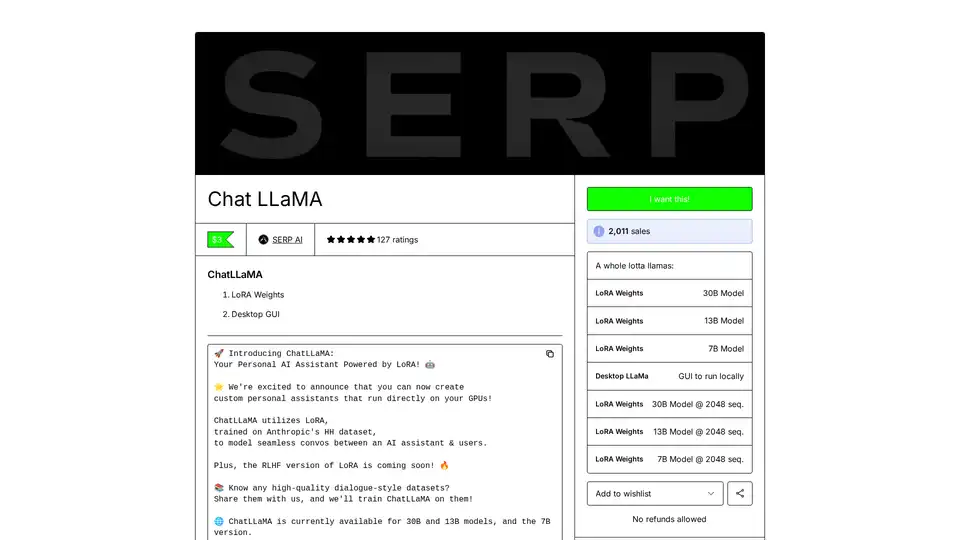
ChatLLaMA is a LoRA-trained AI assistant based on LLaMA models, enabling custom personal conversations on your local GPU. Features desktop GUI, trained on Anthropic's HH dataset, available for 7B, 13B, and 30B models.

Jan is an open-source, offline-first AI client. Run Large Language Models (LLMs) locally with privacy and no API bills. Connect to various models and services.
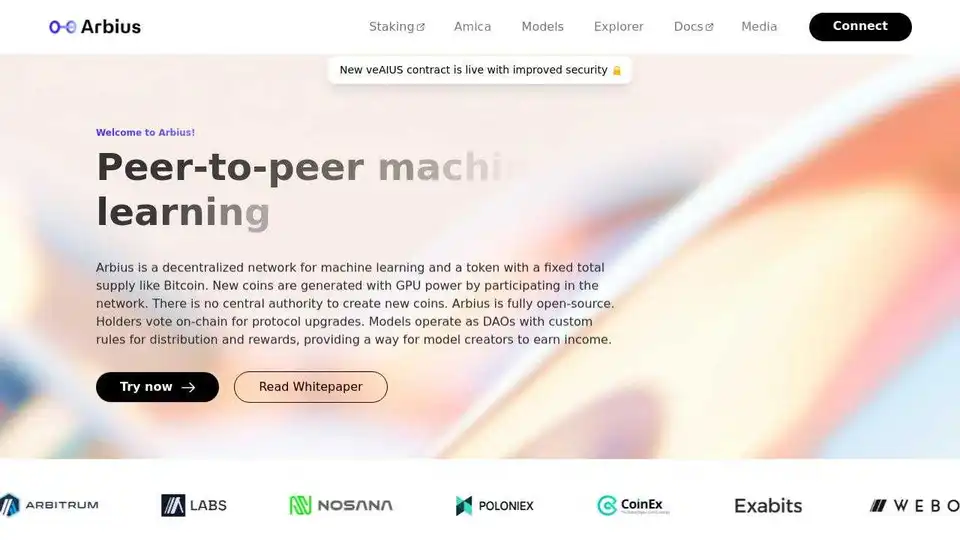
Arbius is a decentralized network powered by GPUs globally, creating a shared economy around generative AI. It allows users to participate in governance, earn fees via staking, and promote open AI.
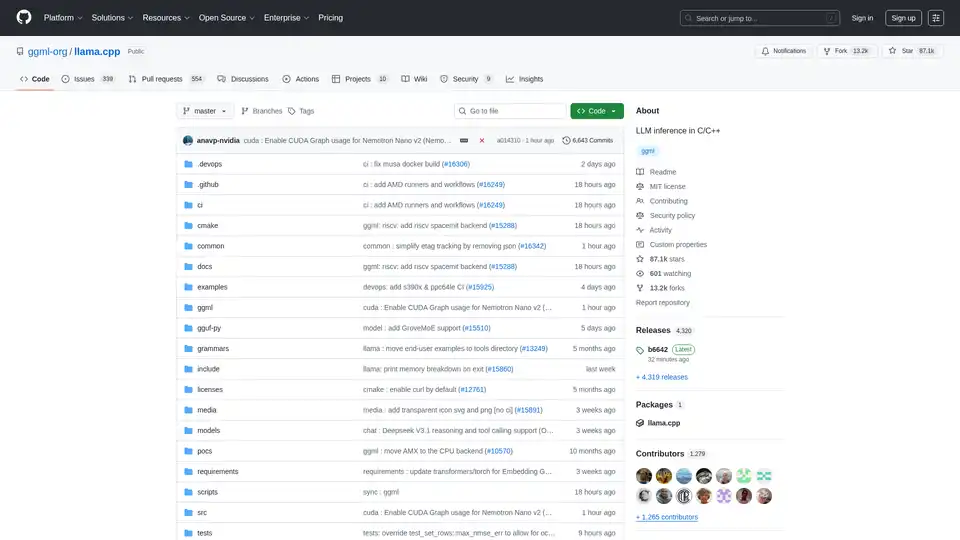
Enable efficient LLM inference with llama.cpp, a C/C++ library optimized for diverse hardware, supporting quantization, CUDA, and GGUF models. Ideal for local and cloud deployment.
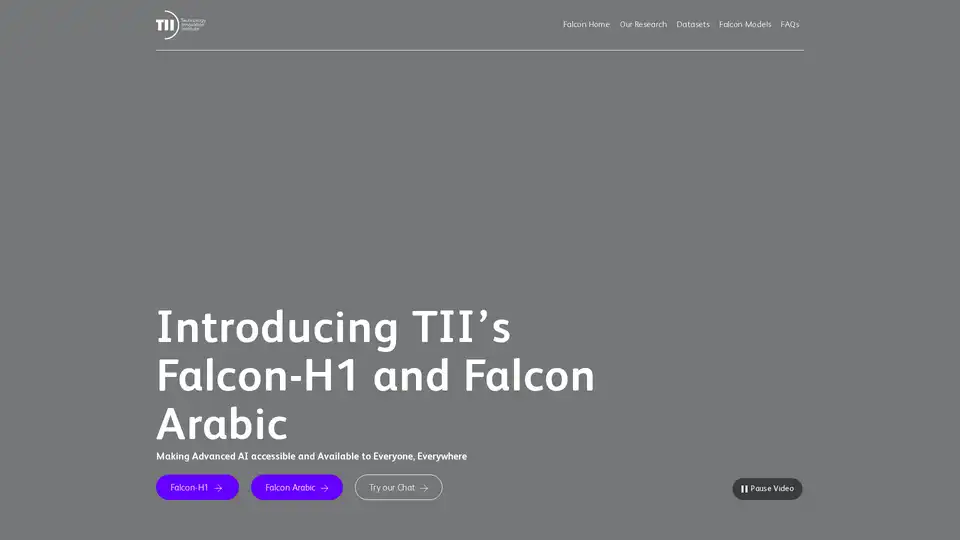
Falcon LLM is an open-source generative large language model family from TII, featuring models like Falcon 3, Falcon-H1, and Falcon Arabic for multilingual, multimodal AI applications that run efficiently on everyday devices.
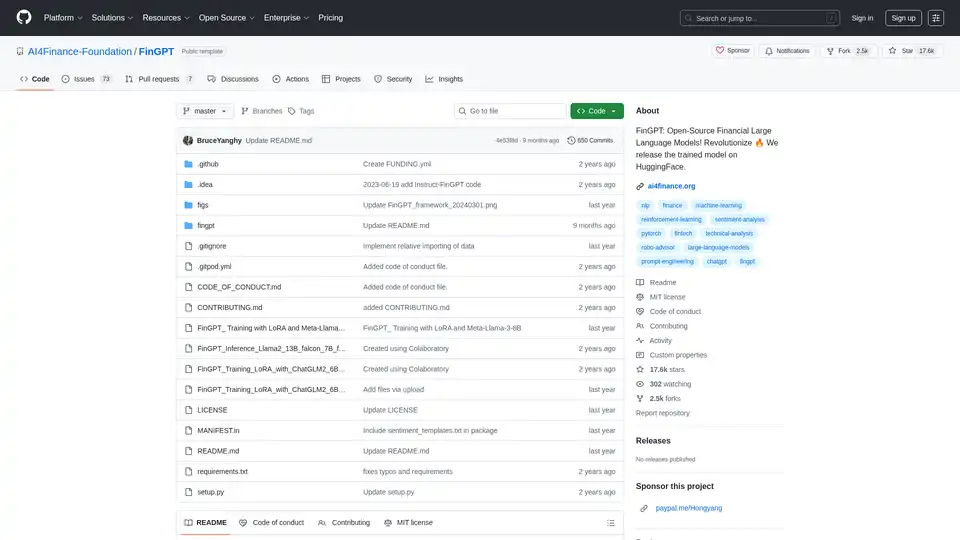
FinGPT: An open-source financial large language model for democratizing financial data, sentiment analysis, and forecasting. Fine-tune swiftly for timely market insights.

Unsloth AI offers open-source fine-tuning and reinforcement learning for LLMs like gpt-oss and Llama, boasting 30x faster training and reduced memory usage, making AI training accessible and efficient.
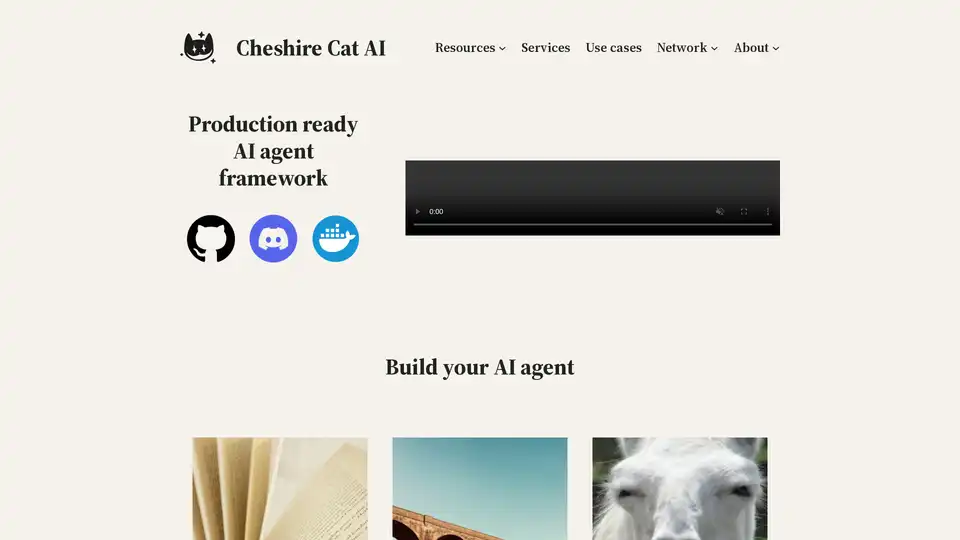
Cheshire Cat AI is an open-source framework that simplifies building AI agents. It supports LLMs, external APIs, and plugins, all within a Dockerized environment for easy deployment and customization.
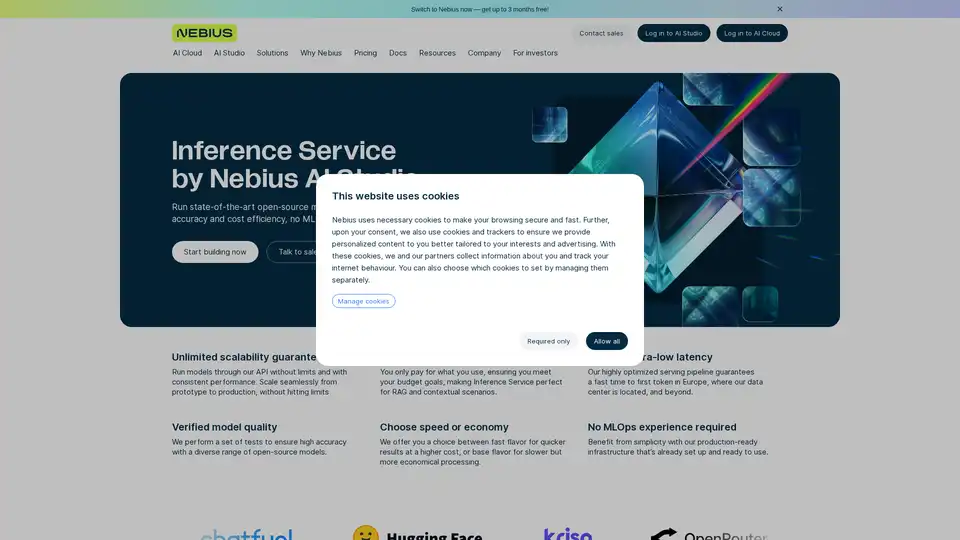
Nebius AI Studio Inference Service offers hosted open-source models for faster, cheaper, and more accurate results than proprietary APIs. Scale seamlessly with no MLOps needed, ideal for RAG and production workloads.
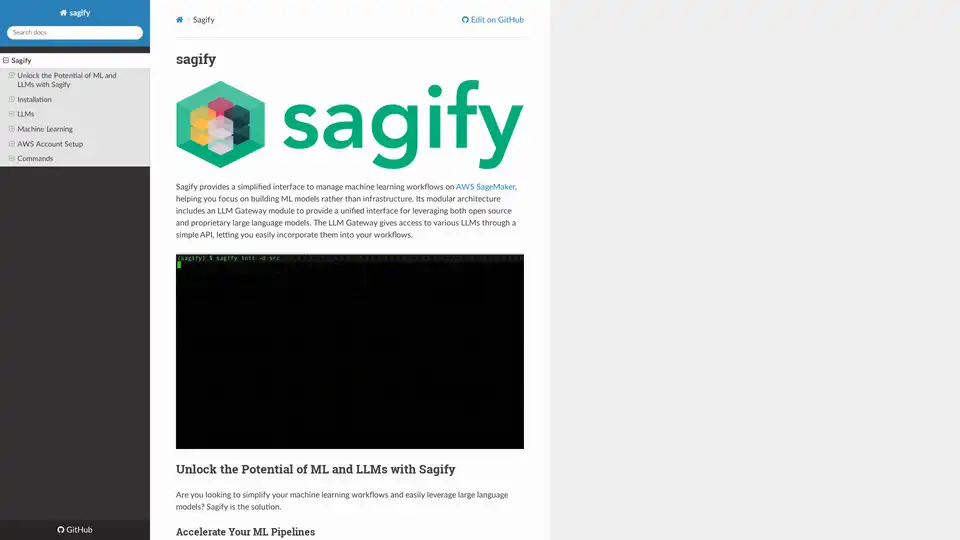
Sagify is an open-source Python tool that streamlines machine learning pipelines on AWS SageMaker, offering a unified LLM Gateway for seamless integration of proprietary and open-source large language models to boost productivity.
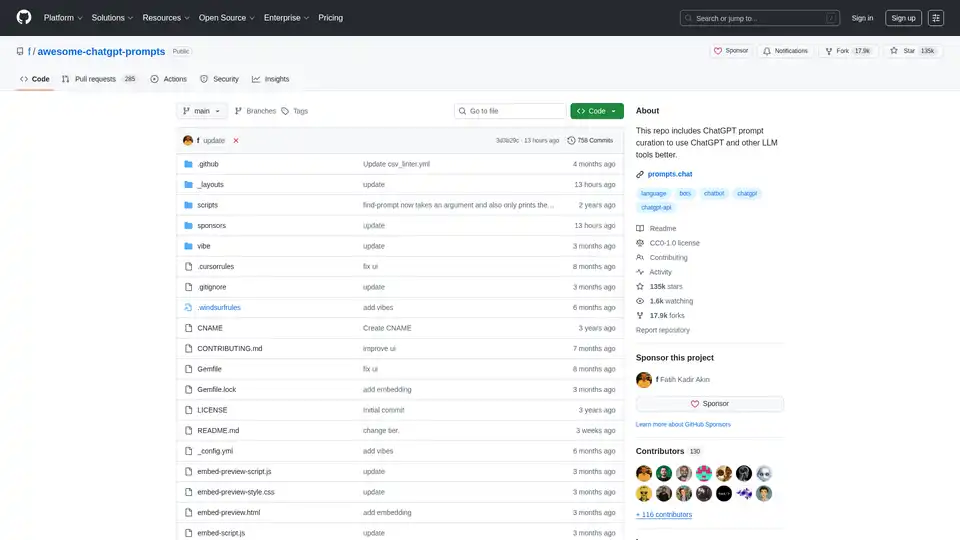
Explore the Awesome ChatGPT Prompts repo, a curated collection of prompts to optimize ChatGPT and other LLMs like Claude and Gemini for tasks from writing to coding. Enhance AI interactions with proven examples.
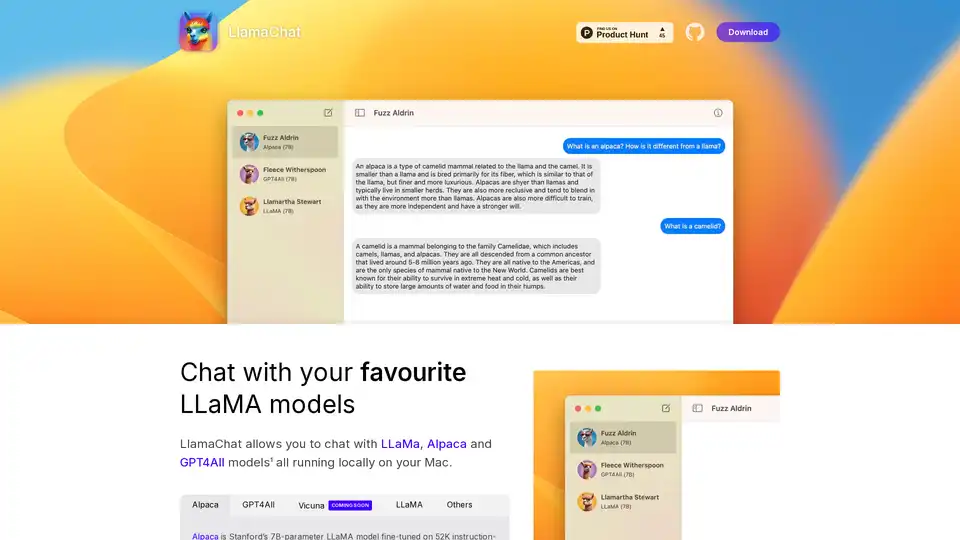
LlamaChat is a macOS app that allows you to chat with LLaMA, Alpaca, and GPT4All models locally on your Mac. Download now and experience local LLM chatting!
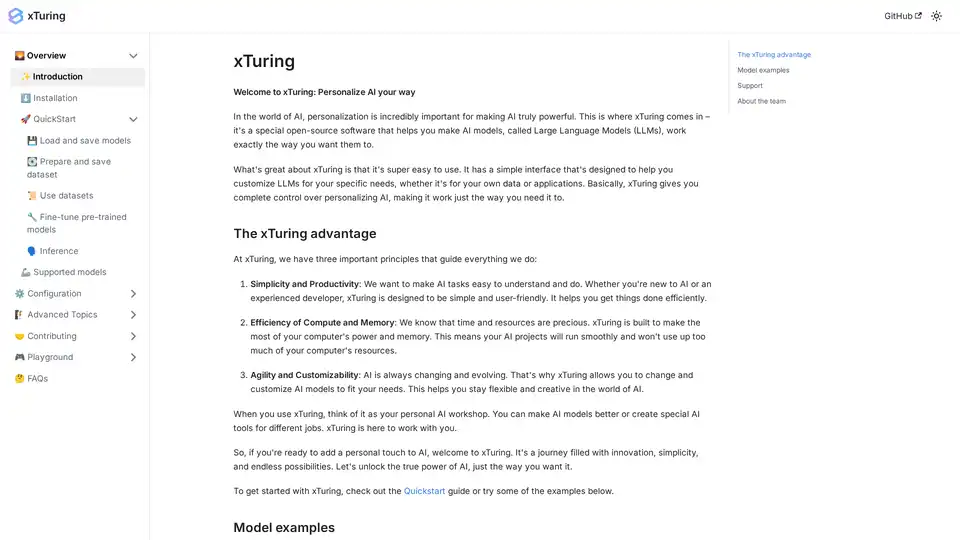
xTuring is an open-source library that empowers users to customize and fine-tune Large Language Models (LLMs) efficiently, focusing on simplicity, resource optimization, and flexibility for AI personalization.
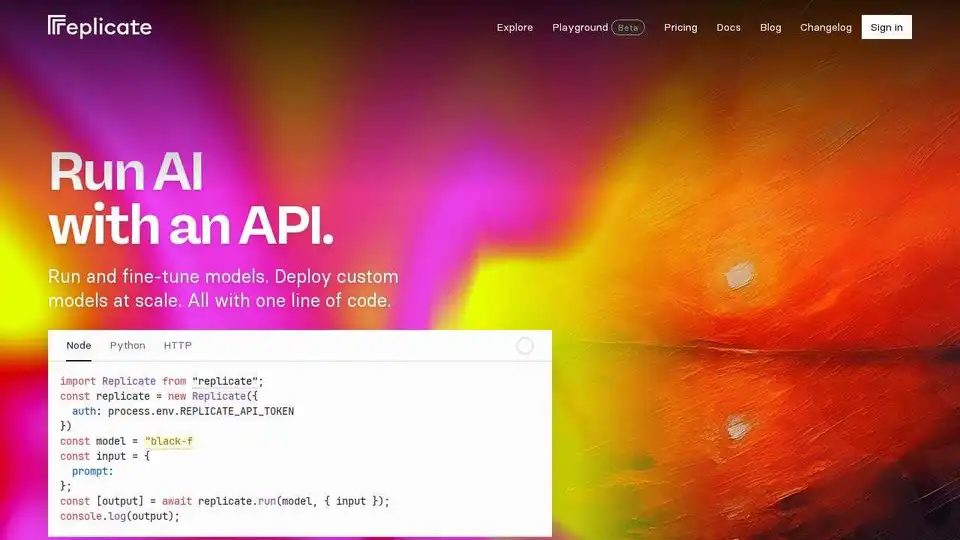
Replicate lets you run and fine-tune open-source machine learning models with a cloud API. Build and scale AI products with ease.
